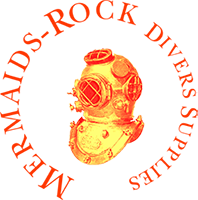Britt Coates can say this for sure: his job is rarely dull.
Go behind the scenes, below the surface.
Muscling icebergs out of the way? Brushes with bull sharks? Just another day for commercial diver Britt Coates. The diver – and dive instructor – gives us the low-down on his very adventurous, not-quite nine to fiver – and shows off in a few shots from his base at the Divers Institute, Seattle.
So… you dive in Antarctica?
Yep. You constantly have to watch for icebergs that could crush you to death. The water flows fast like a river, and it’s carrying these huge ice chunks. You either need to move, or muscle them out of the way.
So what exactly does a commercial diver do?
Commercial diving sounds fancy, but it’s really just underwater construction. The same work you see on New York City sidewalks, 130 feet (40m) beneath the surface. As for the tools, ours are air-powered and shoot bubbles everywhere. Say you’re using a jackhammer – it has less leverage because of the buoyancy. It bounces around so much. It’s like a rodeo.
What about underwater detonation?
When we have a job with bombs, all we do is take the explosives guy down and put him in position and let him do his thing. Someone else detonates it.
What’s the scariest part of the work you do?
Not knowing – half the time, we’re working in water like chocolate milk. You can’t see your hand until it’s touching your face. You feel things brush against your legs. Those things could be bull sharks. Or they could just be red snapper.
What else?
It’s spooky to be on the underside of a ship hull right near the prop. There are safety precautions to keep it from coming on, but it’s like putting your hand in the garbage disposal even when you can see that the switch is off.
Any side effects from deep water work ?
We work in deep water, especially in the Gulf of Mexico. We push ourselves beyond what’s safe for decompression [divers stay at certain depths according to charts and computers that determine exactly how many minutes are safe before the excess nitrogen exposure builds up and leads to decompression sickness, getting ‘the bends’]. It’s industry standard to be down as long as we are. That’s how business is done. After I exit the water, I have exactly five minutes to get into the decompression chamber; otherwise, I give those bubbles a chance to get into my blood.
Under the Sea: timeline of a commercial dive
How many times have you been in a chamber?
At least 100. Decompression time is usually an hour and 20 minutes. The longest I have ever sat in a chamber is a few hours after diving at 130 feet (40m) for 50 minutes. I had to go through decompression sickness. But I’ve never been bent. One of the guys I work with has skin bends – a marbled bruising across his skin. Really painful.
So commercial divers are known for a certain reputation…
In the late 60s, guys would go to bars and see how far they could push it before getting in the water the next morning. The cowboy days are gone, but this industry still attracts thrill-seeking, hardcore personalities. You find people who like to live on the edge and have a good time.
Sounds stressful. How do you cut loose?
Commercial divers are big pranksters. One friend of mine had a job at a dam. Since it was very cold, divers donned hot-water-filled suits warmed by hoses. When the job started, my friend lobbed a handful of gold-foil-covered chocolate coins into the water. When the diver hopped in, everyone listening to the monitors said he started breathing really hard. He said he was fouled up and needed time. Really, he was madly stuffing the coins into his suit. When that guy came back up and took the suit off, his hairy chest was covered in chocolate.
What about initiations?
We 'chum' all the newbies. When you’re in the Gulf in that murky water, someone will swim behind the new guy and place a can of tuna in his bailout bottle. That can of tuna has holes punched in it, so fish swarm him to the point he can hardly see.
So why stick with it?
It’s crazy and intense, but you just can’t take any of it too seriously or you’d burn out. Every day is just another day on the job, and it’s exhilarating.
Coates is also an instructor at the Divers Institute of Technology in Seattle, Washington, where he teaches others how to become commercial divers.
LATEST ARTICLES
- “El Buzo,” or “The Diver,”... Statue... Mexico.
- Dive Into History
- Depth Of The Deepest Dive With Breathing Apparatus
- A BRIEF HISTORY OF DIVING: FREE DIVERS, BELLS AND HELMETS
- Saturation Diving Technique
- 20,000 lies under the sea ... The fishy world of Jacques Cousteau
- Royal de Luxe ... The Giant Diver Mechanical Marionette
- Europe's first underwater museum opens off Lanzarote
- Cousteau legacy still making a splash
- In Memoriam | Bob Kirby: 1933-2022
- The COMEX Story
- 10 Things No One Tells You Before You Become A Deep Sea Diver
- Diving Suits through History
- Training And Qualifications in Commercial Diving
- Australia’s deepest ever commercial dive leads to brain injuries, mental scarring


